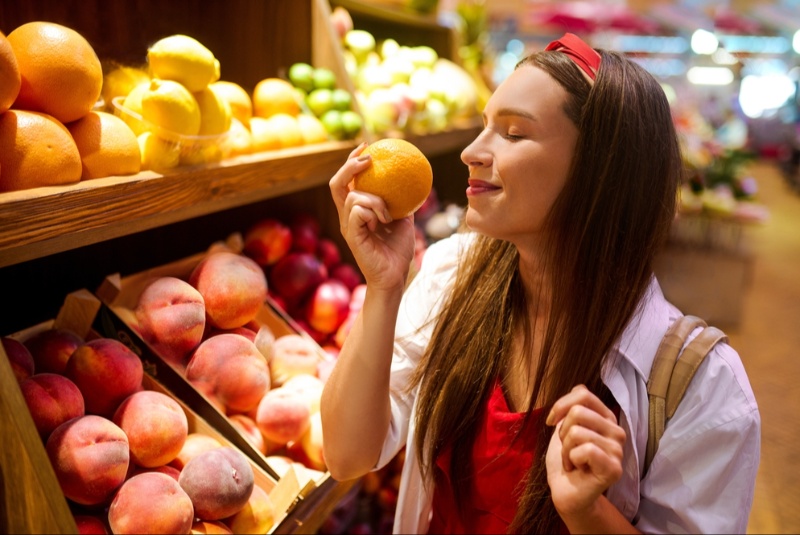Farmers markets offer a chance to eat fresh, support local farmers, and enjoy a community-driven shopping experience. But while they’re often known for quality, they can sometimes be perceived as expensive. The truth is, with a few smart strategies, you can walk away with a basket full of produce without spending a fortune.
These tips will help you make the most of your farmers market trips—and stretch your grocery budget at the same time.
Shop Late in the Day
One of the easiest ways to save is by visiting the farmers market toward the end of the day. Vendors often prefer to sell their remaining items at a discount rather than pack them up and take them back home.
You may not get first pick of the most picture-perfect produce, but you’ll likely score better deals. It’s common to hear phrases like “fill a bag for $5” or “2-for-1” as closing time nears.
If your main goal is value over variety, this is the best time to buy.
Get to Know the Growers
Building a friendly relationship with vendors can lead to long-term savings. Farmers often reward loyal, regular customers with:
-
Early access to limited items
-
Bundle discounts
-
Tips on how to store or cook produce
-
Occasional freebies like herbs or seconds (slightly imperfect but perfectly edible produce)
Simple greetings, asking questions about their crops, and showing genuine interest can go a long way. Over time, you'll stand out in the crowd—and may even be offered unadvertised deals.
Don’t Be Afraid to Buy “Ugly” Produce
Slightly bruised apples or oddly shaped tomatoes still taste just as delicious—and they’re often sold at a lower price.
Many vendors sell "seconds"—produce that doesn't meet grocery store beauty standards but is still fresh and nutritious. These are perfect for:
-
Cooking
-
Baking
-
Smoothies
-
Sauces or soups
By asking if they have a “seconds bin” or discounted batch, you might walk away with twice the produce for half the price.
Compare Prices Before Buying
It’s easy to get excited and buy the first strawberries you see, but not every stall has the same pricing. Walk the market once without buying anything. Take note of prices, quality, and sizes before making decisions.
Once you’ve scoped things out, circle back to the vendors offering the best value. You may be surprised at how much prices vary for the same item—especially if one grower had a bumper crop.
Bring Cash and Use Smaller Bills
While many vendors accept cards nowadays, cash still tends to be the preferred method—and some even offer a small discount when you use it.
Carrying small bills helps you negotiate more easily. If you ask, “Can I take both bunches for $4?” and you’re holding a five-dollar bill, it’s much easier for the vendor to say yes.
Having cash also encourages you to stick to a budget, avoiding impulse buys you’ll regret later.
Buy in Bulk—Then Preserve
Buying larger quantities of items in season is one of the best ways to save. When a vendor has too much of one crop, they often slash prices for larger purchases.
If you’re able to buy in bulk, learn basic preservation techniques like:
-
Freezing fruits and vegetables
-
Making jams or sauces
-
Drying herbs
ADVERTISEMENT -
Pickling cucumbers or peppers
This turns short-term deals into long-term savings and reduces food waste.
Ask About Mix-and-Match Deals
If a vendor sells multiple types of produce—like heirloom tomatoes, bell peppers, and zucchini—they may let you mix different items into one price-per-pound deal.
Don’t be shy about asking: “Can I mix these?” or “Can I build a bag with different types?” Most vendors are happy to accommodate if it helps them clear stock faster.
This approach lets you add variety to your meals without buying in separate bundles, which often cost more.
Focus on In-Season Produce
In-season items are more abundant and often less expensive because they’re being harvested in large quantities. Out-of-season produce usually costs more due to limited supply or being grown in special conditions.
If you're unsure what’s in season, just look around—what every stall seems to be selling in abundance is likely your best bet for savings.
You’ll also get better flavor and freshness by sticking to what’s currently at its peak.
Plan Meals Around What’s Available
Instead of shopping with a rigid grocery list, try going to the market with a flexible plan. See what’s fresh, affordable, and in good condition—and build your meals around those ingredients.
This approach helps you avoid overspending on specific items that may be expensive or unavailable, while encouraging creativity in the kitchen.
You might discover a new favorite dish made from produce you hadn’t even considered buying.
Bring Your Own Bags and Containers
Some vendors charge for bags, or may run out later in the day. Bringing your own reusable bags not only saves money but also supports a waste-conscious shopping habit.
If you’re buying items like berries or cherry tomatoes, bring small containers so they don’t get crushed. Some vendors might even appreciate it and offer a small discount or extra produce for reducing their supply cost.
It’s a simple step that pays off in convenience and cost.
Look for Herb Bunches and Starter Plants
Instead of buying fresh herbs in small grocery store containers each week, check if the farmers market has herb bunches or starter plants.
Basil, cilantro, mint, and parsley are often sold for just a few dollars. A large bunch can last much longer—and with starter plants, you’ll have herbs growing at home for months.
This small switch from store-bought herbs to market-fresh (or homegrown) can save a lot over time.
Split Batches With a Friend
If bulk buys are too much for your household, go with a friend or neighbor and split the haul. You can get the benefit of a volume discount without worrying about spoilage.
This works especially well with:
-
Berries
-
Leafy greens
-
Stone fruits like peaches or plums
-
Potatoes and onions
A buddy system makes it easier to shop smart, try new things, and enjoy the savings together.
Shopping at the farmers market doesn’t have to cost more than your local grocery store. With smart timing, thoughtful planning, and a few budget-conscious habits, you can enjoy better food and support local growers without overspending.
It’s about more than just shopping—it’s a chance to connect with your food, your community, and your wallet in one trip. Next time you go, try just one of these tips—and watch the savings start to add up.




